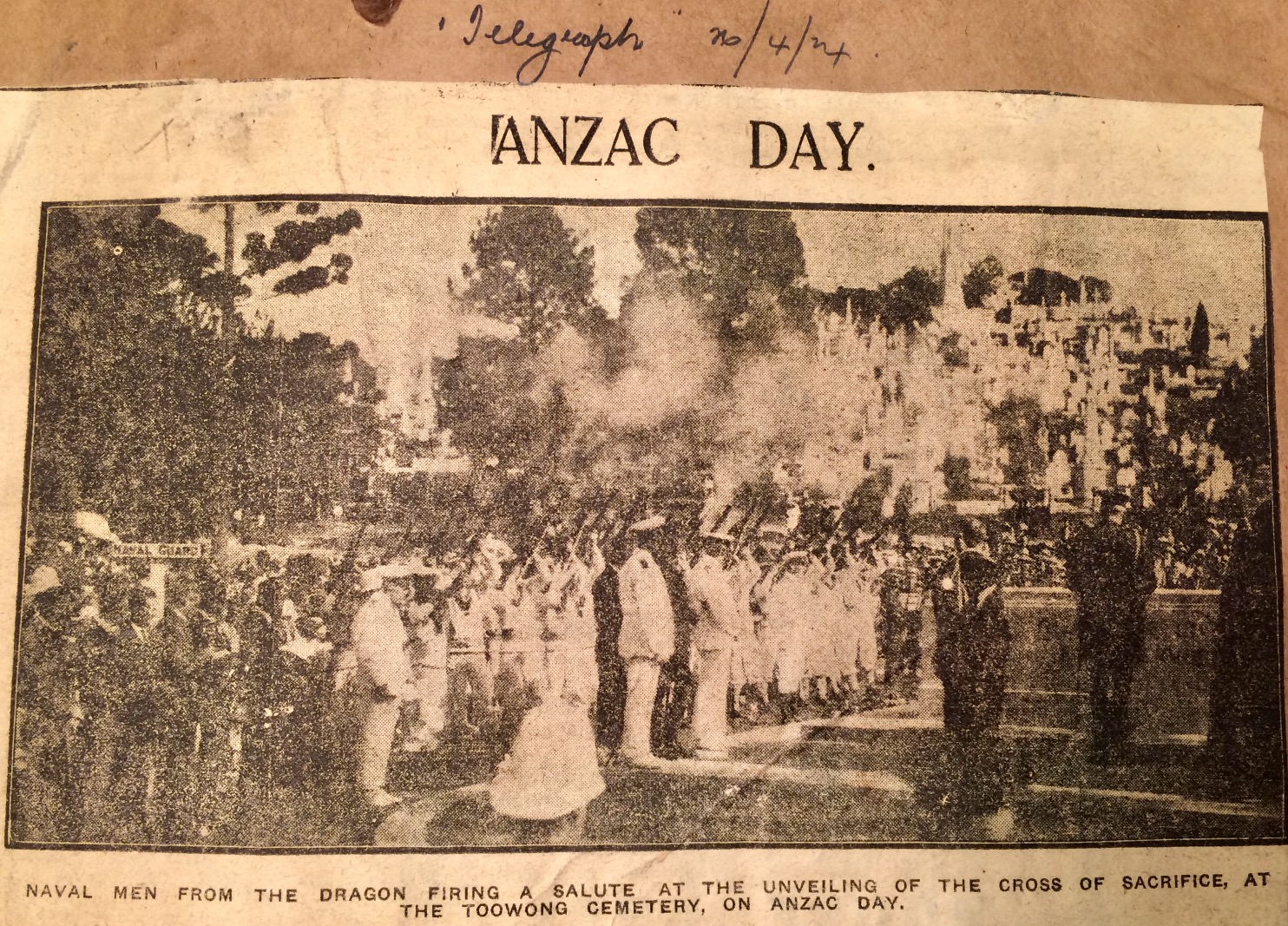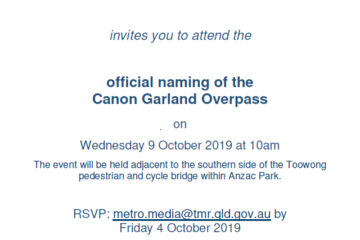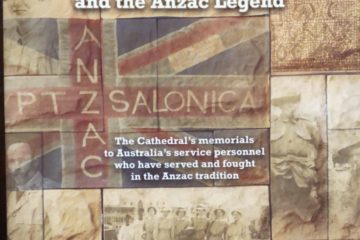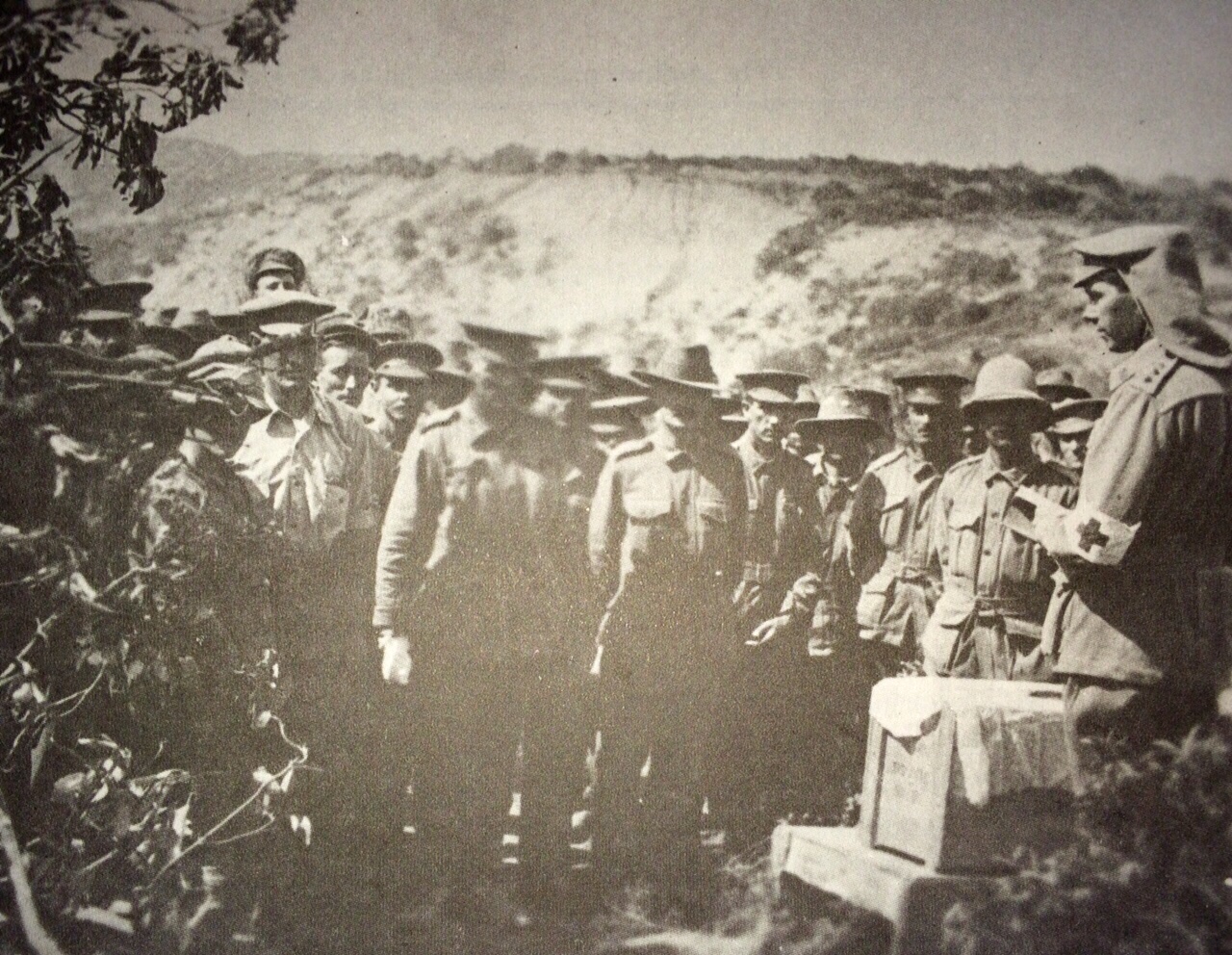Anzac Day editorial, 1924

ABOVE: Included in the State Library of Queensland Collection’s ANZAC Day Commemoration Committee (Queensland) Records (OMHA/2, Box 3550), is this clipping from page 7 of “The Telegraph” (Brisbane) of 26 April 1924. It depicts the 28-strong Honour Guard from HMS Dragon firing “a salute at the unveiling of The Cross of Sacrifice at Toowong Cemetery, on Anzac Day.”
“LEST WE FORGET.”
KIPLING’S magic sentence fitly expresses the Australian feeling behind the continued observance of Anzac Day.
The public memory is said to be short, and short it is on most matters, but not where the heart is touched so deeply as it is by the story of Gallipoli and all that it stands for.
So today, for the eighth year, we are remembering soberly and solemnly, the sacrifices that were made on April 25, 1915, by Australian men in the cause of honour and humanity, sacrifices which constituted our blood baptism as a nation.
The passing years do not tarnish our admiration for the unquestioning response to the call of duty made on Anzac’s fatal beach and cliff, nor do they dim our recollection of those who fell so bravely, that their comrades might succeed.
We go on to remembering these things, not vain gloriously, but proudly conscious that British manhood had not suffered by transplantation in this far off outpost was capable of carrying on the traditions to which we are heirs.
We like to think of their great Anzac adventure as the starting point of our real history, and though first and foremost our thoughts are for the gallant men who laid down their lives on Gallipoli, and for the bereaved ones who bore their loss so stoically, there is in an undercurrent of national pride which will not be denied.
lt asserts itself in the messages from the King and Queen, and from the Australian Prime Minister, which we publish elsewhere in our columns today, and it will ring through the sermons and speeches which are being delivered throughout Australia.
Anzac Day stands for a high idealism, and if we needed proof of it, we can find it in the determination of the returned sailors and soldiers that the occasion shall be one of solemnity and not of rejoicing.
The memory of the heroes is thus rededicated each year in every place of worship throughout our land, and today we have added to these requiems the unveiling of a Cross of Sacrifice and Stone of Remembrance in Toowong Cemetery which shall stand in lasting assurance that “their name liveth for evermore”.
There is another side to the observance which is not less worthy and that is the carrying of the recollection of Anzac Day into our elementary schools, where soldiers and others well qualified for the task tell the boys and girls the story of Anzac and implant in their impressionable minds the morals of loyalty, devotion, patriotism and sacrifice which Gallipoli enshrines.
We in Queensland take pride in the fact that it was in this State that the Anzac Day movement was given birth, and we have seen the spirit of it spread like a flame through the other States.
In some of them the day is set apart from the cares of business.
Brisbane does not follow that example, but most employees are released from duty during the hours of the divine service, and in the minds of the people as a whole, the day is consecrated in a sense which no declaration of a holiday could heighten.
On the first anniversary the King cabled to Australia a tribute to the heroes, which closed with these words:
“May those who mourn their loss find comfort in the conviction that they did not die in vain, but that their sacrifice has drawn our peoples more closely together and added strength and glory to the Empire.”
It is in the spirit of those words that we carry on the Anzac tradition on today, realising that the men who died cemented the foundation of the country with their blood, shed in a nobly righteous cause.
— from the page 8 Editorial in “The Telegraph” (Brisbane) of Friday, 25 April 1924.
FOOTNOTE: On Saturday, 20 April 2024, a civic ceremony – organised by the Stone of Remembrance Centenary Committee, in conjunction with the Toowong RSL Sub-Branch and RSL Queensland (South Eastern District) – was staged in Canon Garland Place to honour the Queenslanders who saw to the erection, a hundred years ago, of The Stone of Remembrance and The Cross of Sacrifice inside Toowong Cemetery’s main entrance (Canon Garland Place) off Frederick Street, Toowong.


